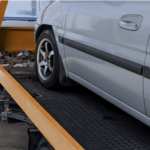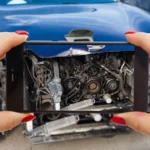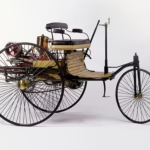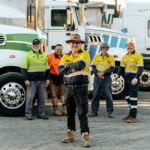Most people only see one side of the car scrapping process. You ring up, they come and collect your car, and that’s it. Job done. But have you ever wondered what happens next? What’s it actually like to work in a scrapyard? What does a typical day look like for the people who turn your old banger into recycled metal?
We caught up with Dave, who’s been working at an Authorised Treatment Facility (ATF) in the Midlands for the past eight years. He’s seen it all, from luxury cars to complete wrecks. Here’s his story of what it’s really like behind the scenes.
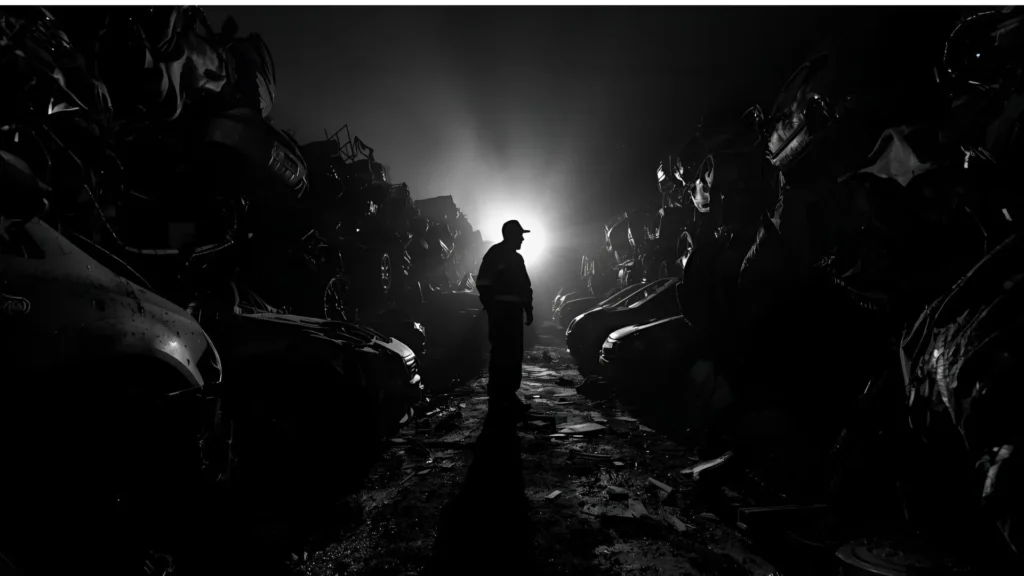
7:00 AM: The Day Begins
Dave’s day starts early. He’s at the yard by 7 AM, along with the rest of the team. The first job is always a safety briefing. Working in a scrapyard isn’t like working in an office. There are heavy machines, hazardous materials, and a lot of potential dangers. So, safety comes first.
“We go through the day’s plan,” Dave explains. “What cars are coming in, what needs to be processed, and any special jobs we’ve got on. And we always check that everyone’s got their PPE – hard hats, steel-toe boots, high-vis jackets, the lot. You can’t be too careful in this job.”
8:00 AM: The First Collections
By 8 AM, the collection trucks are heading out. Dave sometimes goes out on collections, but today he’s staying at the yard. The first job is to process the cars that came in yesterday. Each car that arrives gets logged into the system. They record the make, model, registration, and the condition it’s in.
“You’d be amazed at some of the cars we get,” Dave says. “Last week, we had a Ferrari that had been in a flood. Beautiful car, but the water had got into everything. It was heartbreaking, really. But that’s the job.”
9:00 AM: De-Pollution
The first stage of processing any car is de-pollution. This is where they remove all the hazardous materials. Dave and his team drain the fuel, oil, coolant, and brake fluid. They remove the battery and the airbags. It’s a methodical process that has to be done exactly right.
“This is the most important part of the job,” Dave explains. “If we don’t do this properly, we could cause serious environmental damage. All these fluids have to be disposed of safely. The fuel gets cleaned and reused. The oil gets recycled. Even the coolant can be processed and used again.”
11:00 AM: Salvage and Parts Removal
Once the car is de-polluted, the team looks for parts that can be salvaged. Not every car is just crushed. If there are parts in good condition, they’ll be removed and sold on.
“We’ve got a good eye for what’s worth saving,” Dave says. “Engines, gearboxes, doors, lights – if it’s in good nick, we’ll take it off. There’s a big market for used car parts. It’s much cheaper for someone to buy a used door from us than to buy a new one from the manufacturer.”
Dave shows us the parts warehouse. It’s like an automotive treasure trove. Shelves lined with engines, boxes of lights and mirrors, and racks of wheels and tyres. Each part is catalogued and tested before it goes on sale.
1:00 PM: Lunch Break and the Interesting Finds
The team breaks for lunch at 1 PM. It’s a chance to swap stories about the morning’s work. And there are always stories.
“You find the weirdest things in cars,” Dave laughs. “Money, jewellery, old photos. Once, we found a wedding dress in the boot of a car. The owner had completely forgotten it was there. We managed to get it back to them, and they were over the moon.”
But it’s not always happy endings. Dave has also found things that have had to be handed over to the police. “You learn not to ask too many questions,” he says.
Also Read:
- How to Get Cash for Used Cars: A Comprehensive Guide to Sydney Cash for Cars
- Advantages of Selling Your Car to Junkyard in Philadelphia
- Types of Cars: A Comprehensive Guide to Vehicle Categories for Every Need
2:00 PM: The Crusher
After lunch, it’s time for the main event: the crusher. The cars that can’t be salvaged, or have had all their useful parts removed, go into the giant shredding machine. It’s an impressive sight.
“The crusher can process a car in about 30 seconds,” Dave explains. “It rips it apart and separates all the different materials. The steel goes one way, the aluminium goes another, and the plastic and foam get blown away by a big fan. It’s like a giant recycling machine.”
Dave operates the crane that feeds cars into the crusher. It takes skill and experience to do it safely. “You’ve got to be careful,” he says. “These machines are powerful. They don’t stop for anything.”
4:00 PM: Sorting and Baling
The final stage of the process is sorting and baling the recycled materials. The steel gets compressed into huge bales that are then sold to steel mills. The aluminium is sorted by grade and sent to smelters. Even the plastic is sorted and sent for recycling.
“People don’t realise how much of a car can be recycled,” Dave says. “We recycle about 95% of every car that comes through here. It’s one of the most efficient recycling processes in the world.”
5:30 PM: End of the Day
Dave’s day ends at 5:30 PM. Before he goes home, there’s a final safety check and a debrief about the day’s work. The yard is cleaned up, and everything is secured for the night.
“It’s a good job,” Dave reflects. “It’s physical work, and it can be dirty, but it’s satisfying. Every day is different. You never know what’s going to come through the gates. And you’re doing something important. You’re helping to protect the environment and providing materials for new products. That’s not a bad way to make a living.”
The Human Side of Scrapping
Talking to Dave gives you a different perspective on car scrapping. It’s not just about getting rid of old cars. It’s about skilled workers doing an important job. It’s about recycling and protecting the environment. And it’s about the stories and memories that come with every car.
“Every car has a story,” Dave says. “And we’re the final chapter. It’s a responsibility we take seriously.”
So, the next time you scrap a car, remember Dave and his team. They’re the ones who make sure your old car gets a proper send-off and a new life as something else entirely.

